Every good cook needs a great stock. My homemade vegetable stock is infused with layers of healthy flavor from veggies, herbs and spices, and can take any dish from ordinary to spectacular.
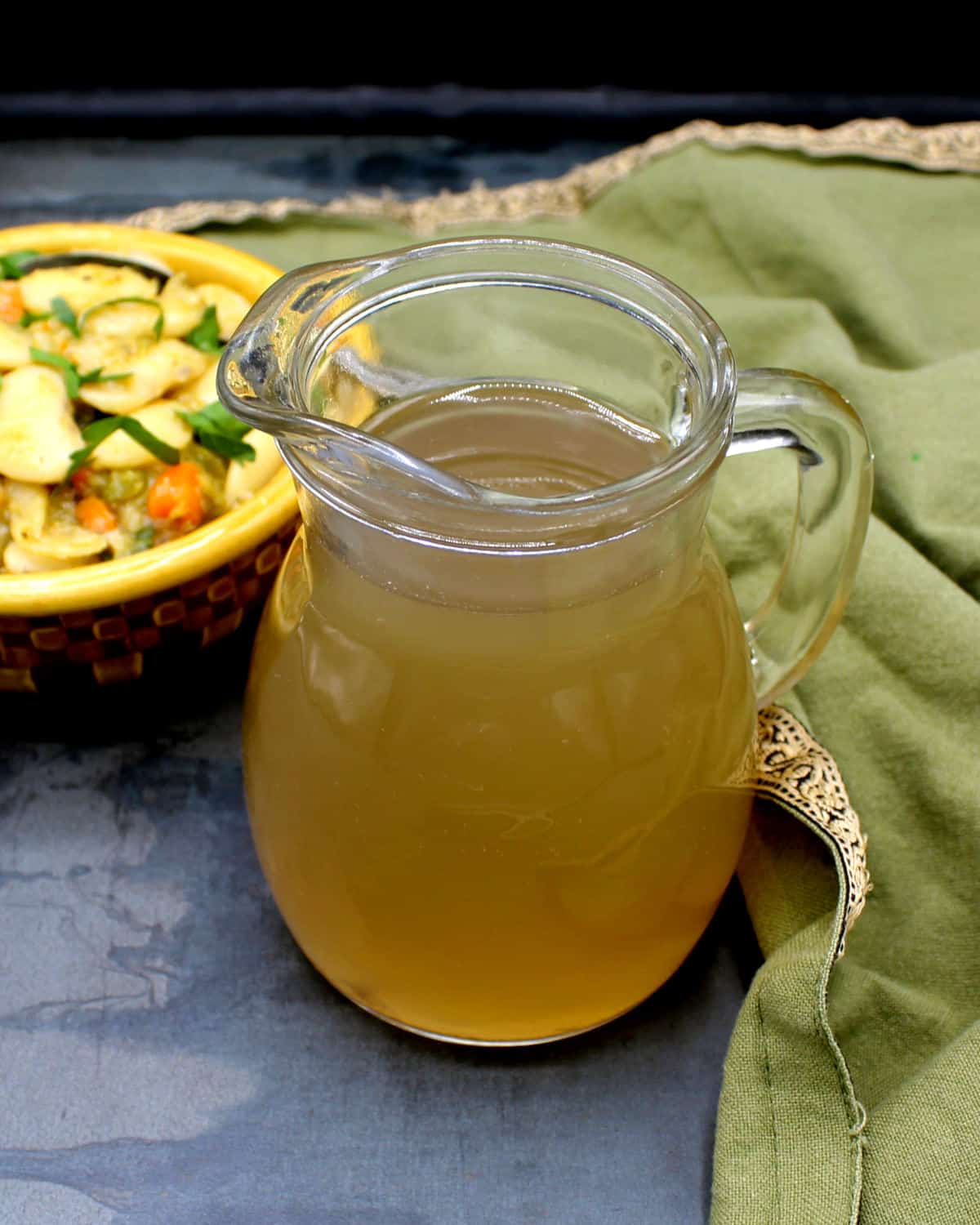
A golden, delicious vegetable stock infused with layers of flavor from herbs, spices, vegetables and even fruits can be a great tool in a cook’s arsenal.
Whether it’s a vegan risotto you are making or a vegan beef stew, a good stock, like this mushroom stock or the vegetable stock I am sharing here, can make all the difference, adding depth of flavor and umami and that critical je ne sais quoi to any recipe.
This vegetable stock is a frugal recipe: it is made entirely with vegetable scraps or portions of veggies that you might just throw out. I save these scraps in a large freezer bag and pull them out when I need to make a stock. Add a few herbs and spices and voila, you have an amazing vegetable stock to make your stews and soups taste wow!
This is my everyday stock, the stock I’d have in my fridge at any given time. I also make a roasted vegetable stock with caramelized veggies that I will share with you another day. Meanwhile, save those vegetable scraps for a couple of weeks and then, get cooking!
Table of Contents
Why you will love this recipe
- Loaded with flavor and umami. The addition of a few simple spices and herbs makes this vegetable stock so, so flavorful. Allowing the veggies to cook slowly also infuses the stock with all of their healthy goodness.
- Cooks itself. Making a vegetable stock can’t be easier: you just throw all the ingredients into a pot and let it cook. No stirring required. This is also a great recipe to make in the Instant Pot or crockpot.
- Frugal recipe. Using vegetable scraps makes this recipe an extremely frugal one. You can save nearly any part of a veggie or fruit you might normally throw out (see ingredients below for more on this). Remember, you won’t actually be eating these: you’ll just infuse the stock with all of their goodness, which is considerable, and then strain them out.
- Perfect for meal prep. If you do a lot of meal prep, a good vegetable stock can make things much easier by adding valuable flavor to dishes without the need for multiple ingredients.
Ingredients
- Vegetables or vegetable and herb scraps. This time I had some asparagus ends, celery tops, cauliflower leaves, mushroom stems, apple peels (from making my vegan apple pie for Thanksgiving), parsley stems and leek greens, which I used for the vegetable stock. You can also use broccoli stems, onion and garlic skins, corn cobs, carrot peels, parsnip peels, tomato seeds, ginger peels, fennel fronds and ends, ribs of bell peppers, stems of any herbs, including fresh thyme or fresh rosemary or fresh sage…the list goes on. Do try and avoid citrus fruit and peels because they can add bitterness to the recipe. To make the stock with vegetables instead of veggie scraps, see FAQs below.
- Spices: Cinnamon stick, allspice berries and whole black peppercorns.
- Herbs: Bay leaves and rosemary (optional)
How to make vegetable stock
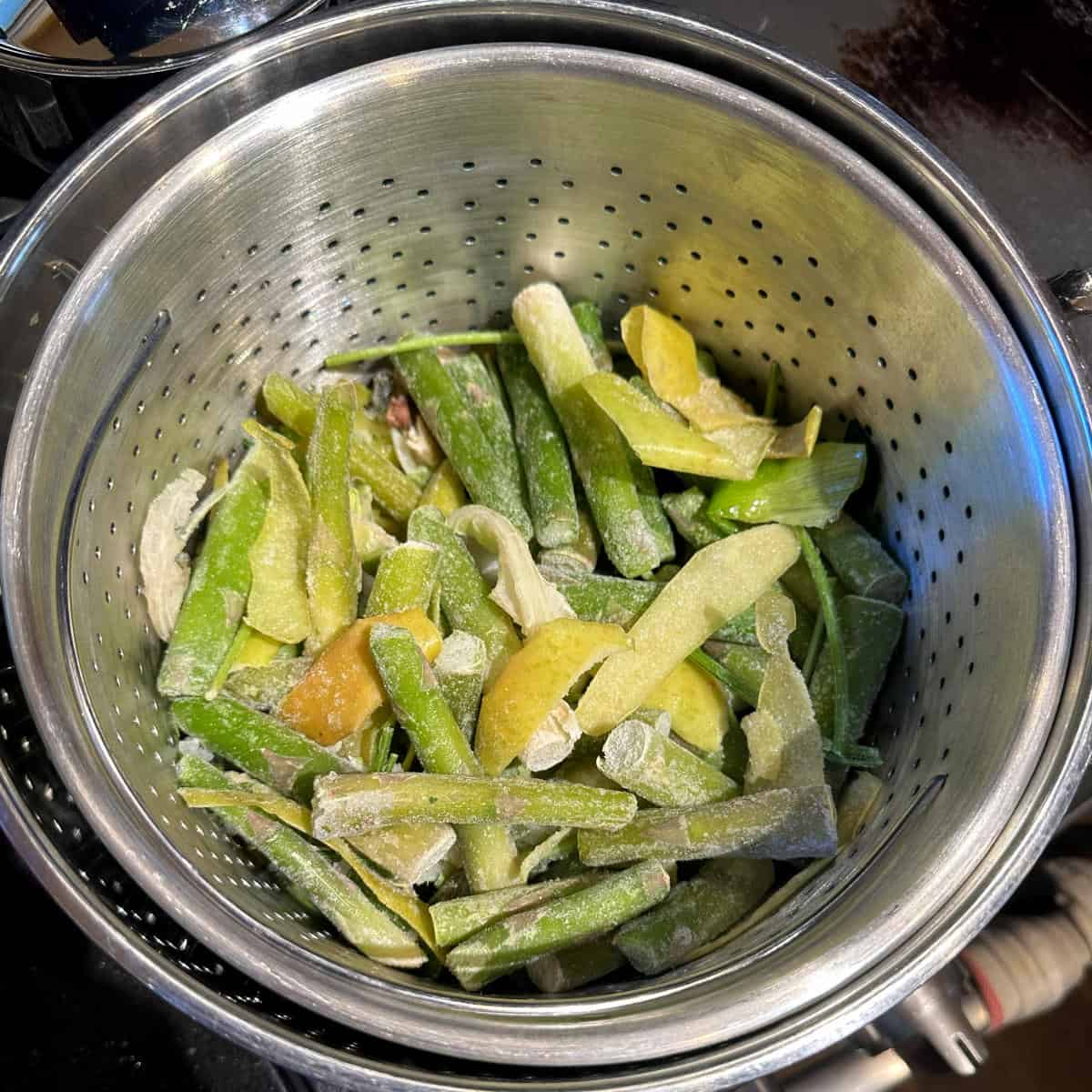
Place all vegetables in stockpot.
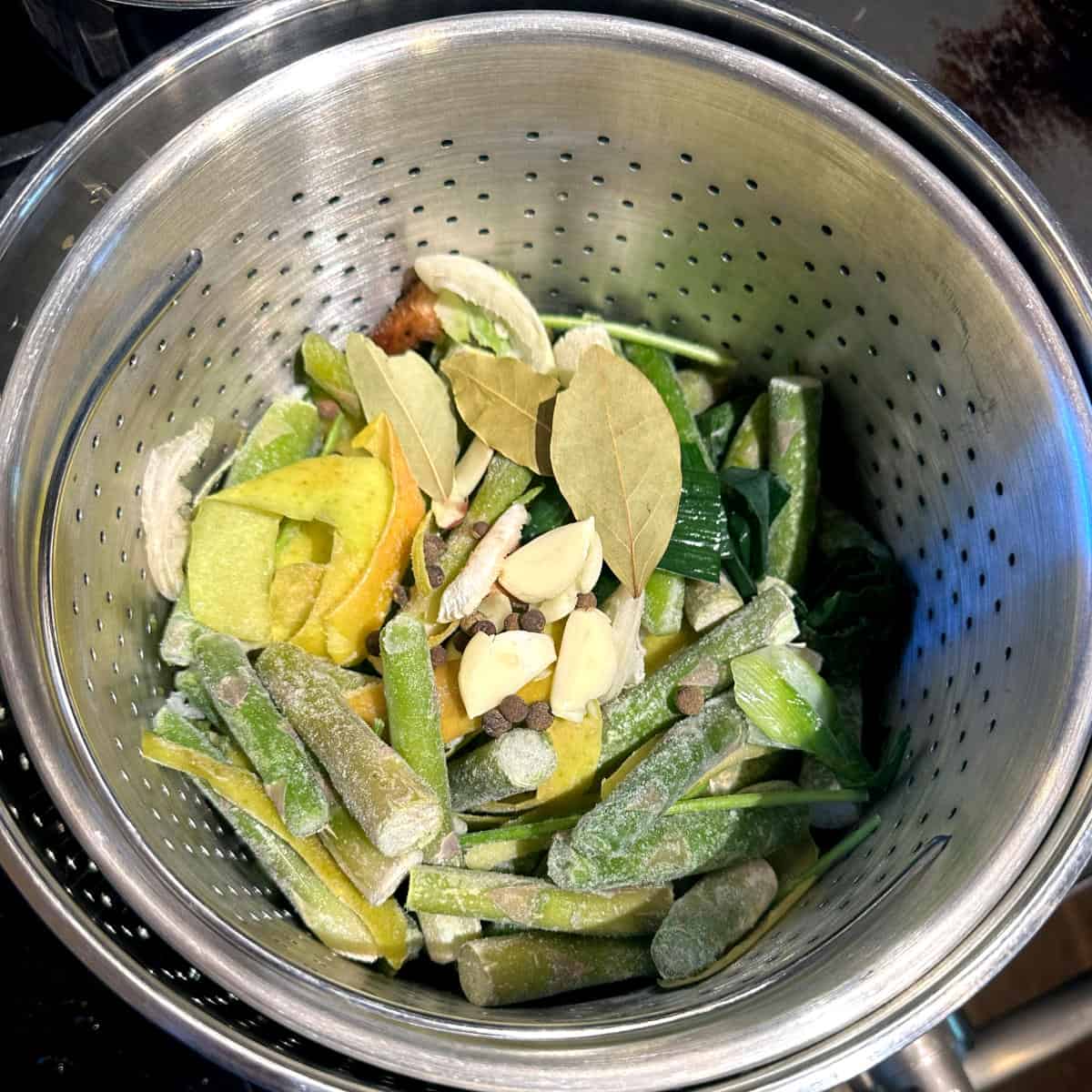
Add herbs, including garlic, bay leaves and rosemary, if using, peppercorns, cinnamon stick and all spice berries to the pot.
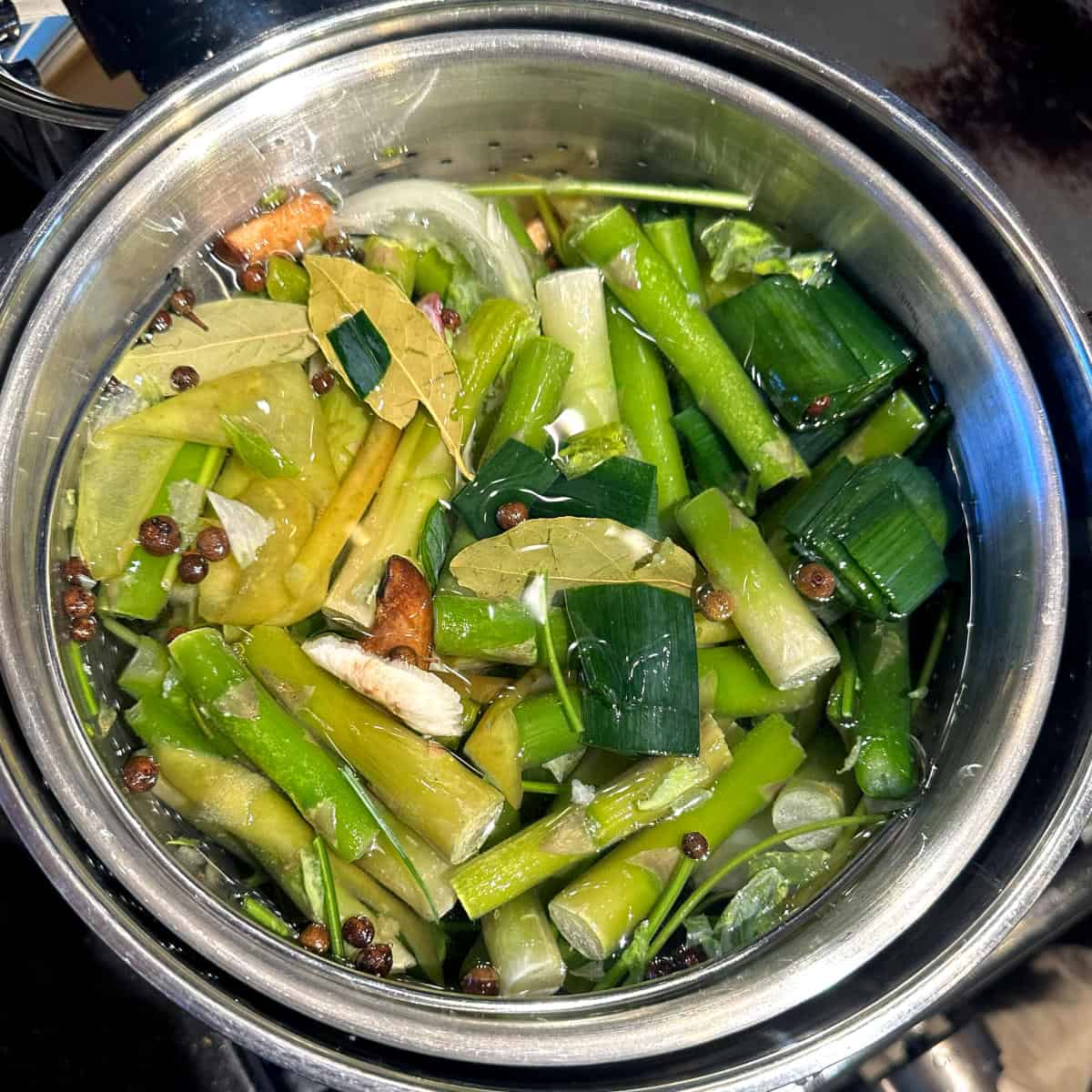
Add 12 cups cold water, preferably filtered water, and ½ teaspoon salt. Turn heat to medium high and let the stock come to a boil. Turn down the heat so the stock is at a simmer.
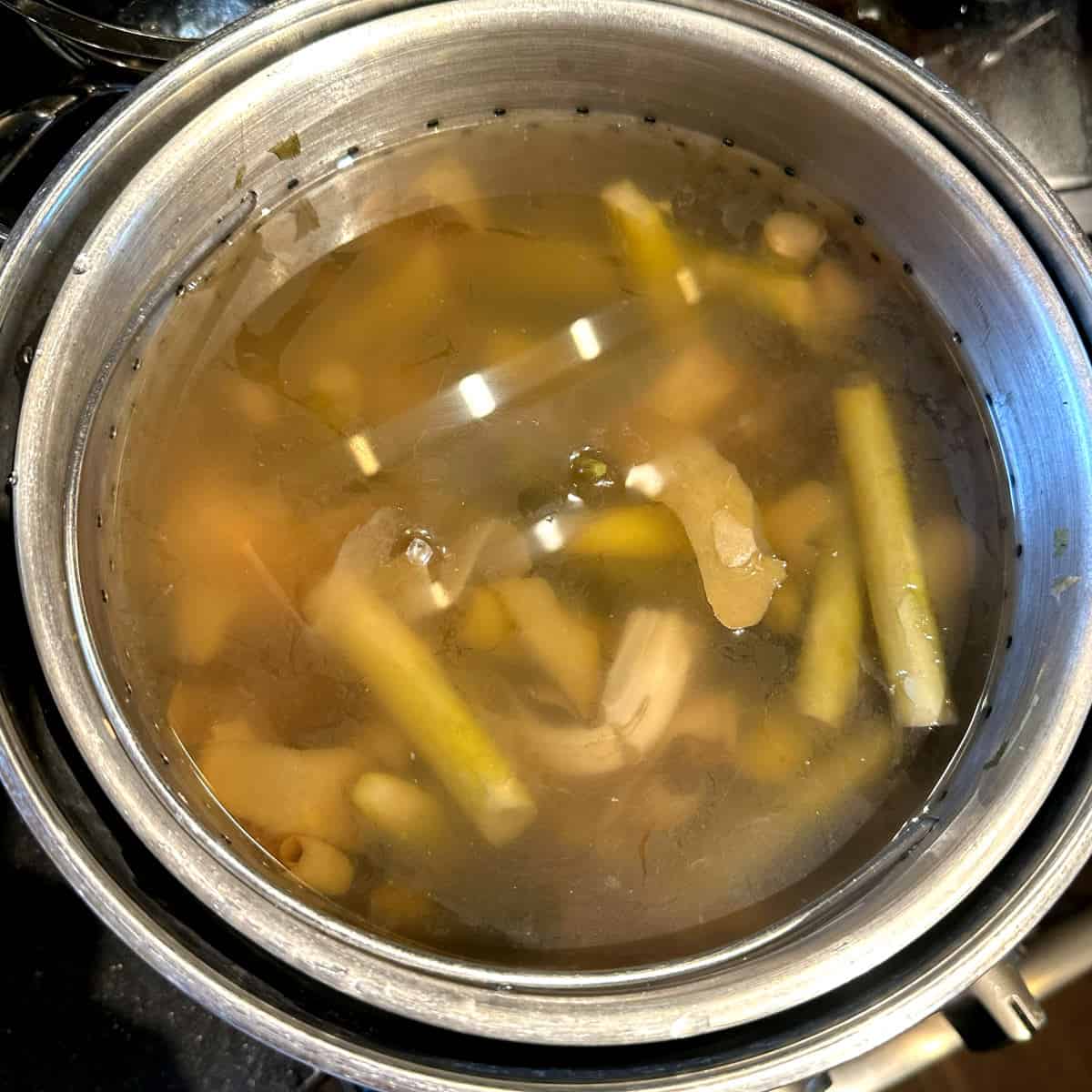
Cover and let the stock cook for an hour. Once it has cooled down, strain out the vegetables, herbs and spices. Press on the veggies to release as much of those flavorful juices as you can. Store in the fridge.
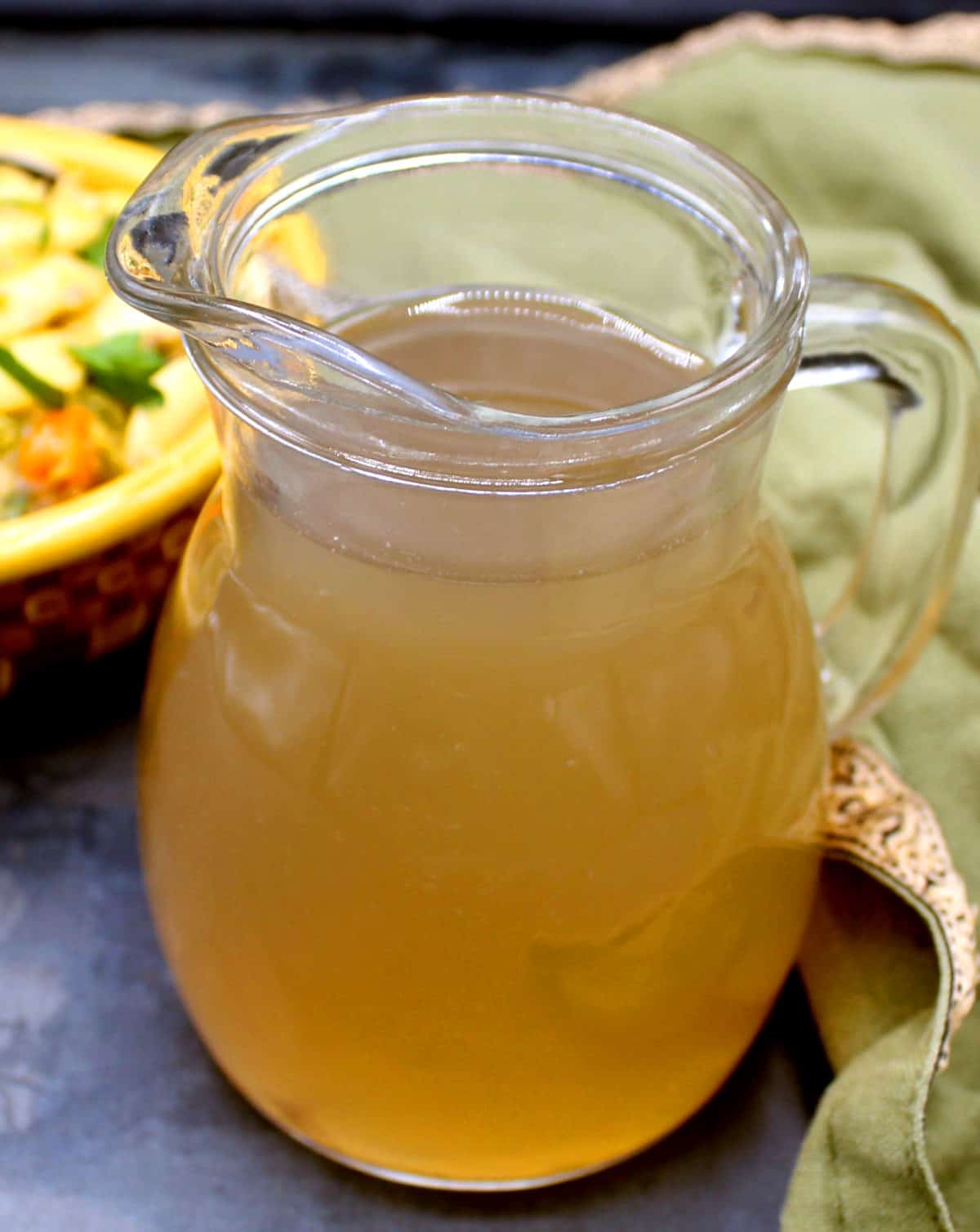
Top tips
- Cut the vegetable scraps into smaller pieces before freezing. That way you can add them directly to the pot, no need to thaw them first. The smaller the veggies are, the more goodness will be extracted from them.
- Even if you use a stockpot or pasta pot with a strainer, as I did, pass the stock through a fine mesh strainer or sieve lined with cheesecloth to remove any floating pieces of veggies or spices. That way your stock will last longer in the fridge.
- The color of the homemade vegetable stock will change depending on the veggies you add to it. Adding more mushrooms and red onion skins, for instance, will give you a deeper colored stock.
- If possible, make sure the vegetables and vegetable scraps you use are organic for the healthiest, most flavorful stock.
Storage instructions
- Refrigerate: Refrigerate the vegetable stock once it has cooled to room temperature. Store in the fridge for up to a week.
- Freeze: Freeze the vegetable stock in portion-sized storage containers or in ice cube trays. Once frozen, you can transfer the vegetable stock cubes to a freezer-safe bag. You can freeze the stock for up to three months.
Recipe FAQs
Yes! If I were starting this vegetable stock from scratch I’d use an onion, three celery stalks, a carrot, 8-10 mushrooms and a few sprigs of fresh herbs, including thyme, rosemary or sage. Chop the veggies into small pieces and be sure to add the spices and garlic for the best flavor.
Some cooks insist they are one and the same. However, there are a few small differences you can drill down to:
– A vegetable stock is usually not seasoned with salt, whereas a vegetable broth would contain salt or other seasonings (although I do add a pinch of salt to the stock to extract the flavors from the veggies).
– A stock is cooked for a longer time — one to two hours — whereas a broth would be ready in 30 minutes.
– A broth can often be eaten on its own as part of a dish because it is already seasoned, whereas a stock is meant to be used to enhance another dish, like a soup or a stew.
As for whether they can be used interchangeably in a recipe, the answer is an unequivocal yes!
Very much so. A store-bought vegetable stock or vegetable broth can contain a large amount of sodium and preservatives. You will also get a fresher, better flavor in your recipes with homemade vegetable stock, and you’ll also save some money!
Recipes to make with homemade vegetable stock
Enjoyed this recipe? Subscribe to my free newsletter for more delicious recipe updates in your inbox. You can also follow me on Facebook, Pinterest and Instagram to keep up with what’s cooking at Holy Cow Vegan!
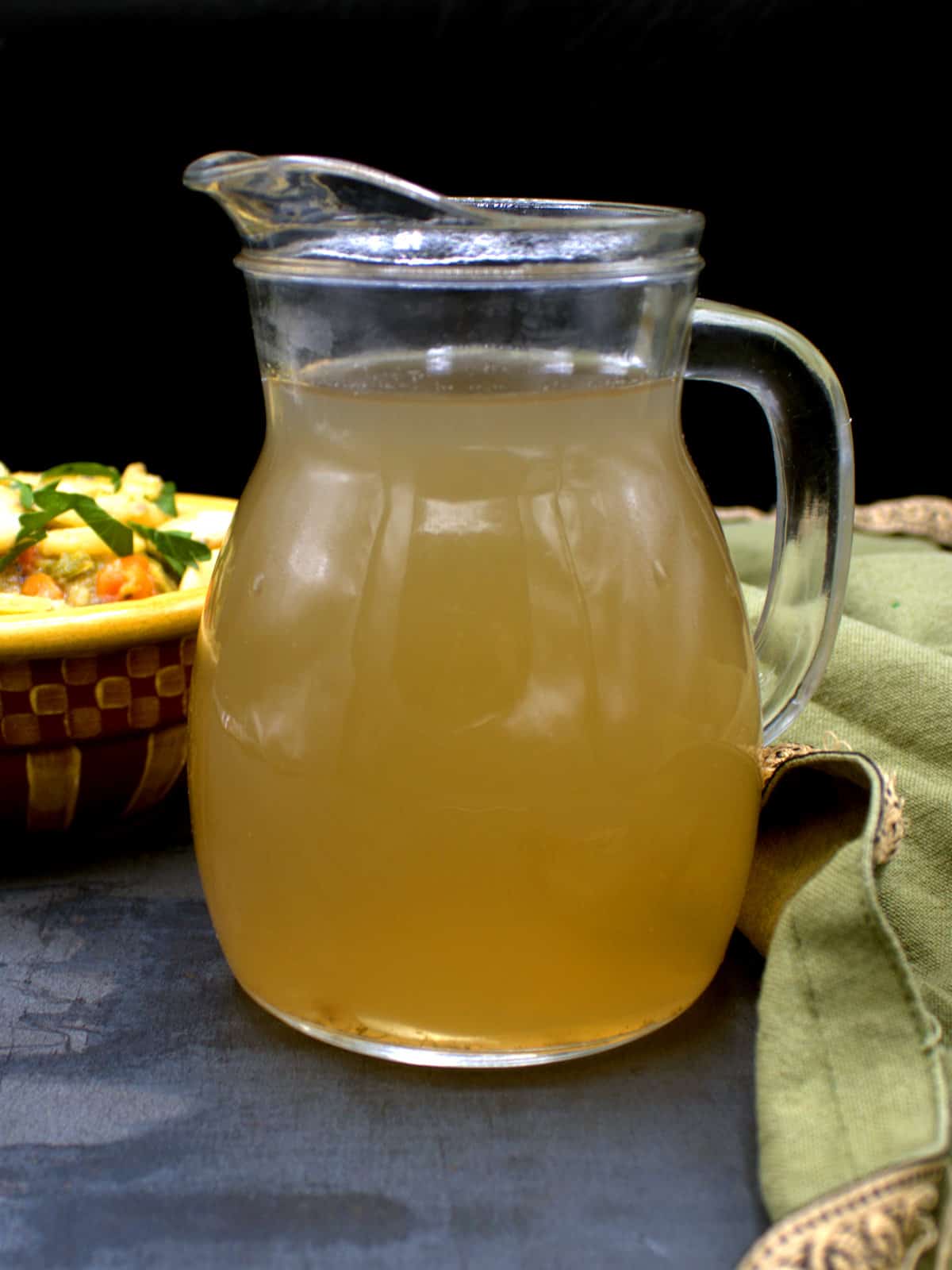

Vegetable Stock Recipe
Every good cook needs a great stock. My vegetable stock is infused with layers of healthy flavor from herbs, veggies and spices, and can take a dish from ordinary to spectacular.
Print Recipe
Pin Recipe
Review Recipe
Servings: 10 cups (approx)
Calories: 1kcal
Prevent your screen from going dark
Instructions
-
Place all vegetables in stockpot. Add herbs, including garlic, bay leaves and rosemary, if using, peppercorns, cinnamon stick and all spice corns to the pot.
-
Add 12 cups water and ½ teaspoon salt. Turn heat to medium high and let the stock come to a boil. Then turn down the heat so the stock is at a simmer.
-
Cover and let the stock cook for an hour. Once it has cooled down, strain out the vegetables, herbs and spices. Press on the veggies to release as much of those flavorful juices as you can. Store in the fridge or freezer (see storage instructions in recipe notes).
Recipe notes
- Examples of vegetable scraps you can use: Asparagus ends, cauliflower leaves, mushroom stems, apple peels, leek greens, broccoli stems, onion and garlic skins, carrot peels, tomato seeds, ginger peels, fennel fronds and ends, bell pepper ribs, celery ends, stems of any herbs, including fresh parsley, fresh thyme or fresh rosemary or fresh sage…the list goes on.
- Making stock with fresh veggies: If making this vegetable stock with fresh veggies instead of veggie scraps, use an onion, three celery stalks, a carrot, 8-10 mushrooms and a few sprigs of fresh herbs, including thyme, rosemary or sage. Chop the veggies into small pieces and be sure to add the spices and garlic for the best flavor.
Storage instructions
- Refrigerate: Refrigerate the vegetable stock once it has cooled to room temperature. Store in the fridge for up to a week.
- Freeze: Freeze the vegetable stock in portion-sized, freezer-safe boxes or in ice cube trays. Once frozen, you can transfer the vegetable stock cubes to a freezer-safe bag. You can freeze the stock for up to three months.
Nutrition
Serving: 1cup | Calories: 1kcal | Carbohydrates: 0.4g | Protein: 0.1g | Fat: 0.03g | Saturated Fat: 0.01g | Polyunsaturated Fat: 0.01g | Monounsaturated Fat: 0.01g | Sodium: 131mg | Potassium: 7mg | Fiber: 0.1g | Sugar: 0.003g | Vitamin A: 5IU | Vitamin C: 0.1mg | Calcium: 12mg | Iron: 0.1mg